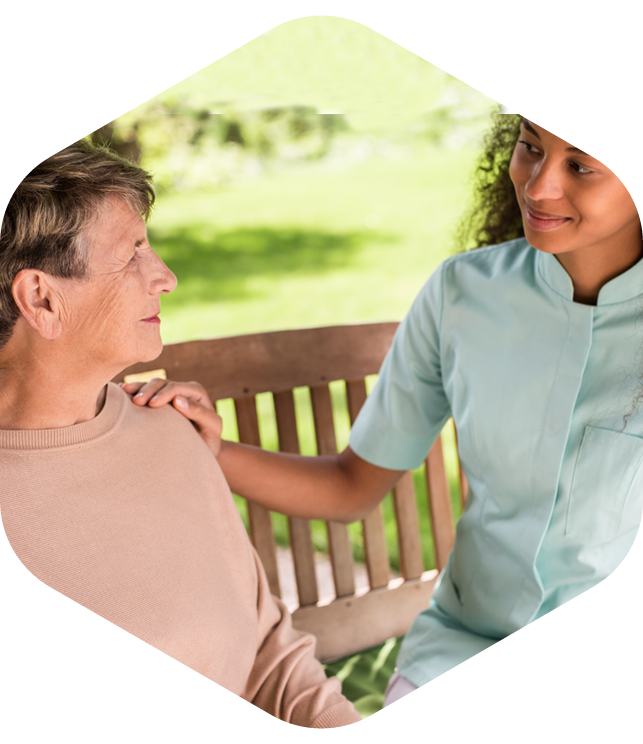How Cancer Patients Can Benefit from Exercising
Exercising according to medical advice is great for patients’ rehabilitation and well-being

A lot of cancer patients feel exhausted and lose muscle mass as the disease advances and/or due to treatment.1 Additionally, some chemotherapy drugs increase the risks of developing cardiovascular diseases.2 Doctors and scientists recommend practicing physical activities during treatment too, in order to prevent cardiovascular diseases and enjoy numerous other benefits, such as: 3
More:
- Quality of life;
- Muscle mass;
- Muscle strength;
- Aerobic fitness;
- Physical endurance;
- Immune system capacity;
- Aptitude to perform daily activities;
- Flexibility.
Less/lower:
- Nausea;
- Body fat;
- Fatigue;
- Heart rate;
- Hospital length of stay;
- Symptoms and side effects;
- Blood pressure while resting;
- Depression symptoms;
- Anxiety.
Why practicing physical exercises is important for cancer patients
A study by the American Society of Clinical Oncology revealed that 75% of people stopped or cut back exercising after being diagnosed with cancer. The most common reasons were: fatigue, lack of motivation, pain and trouble keeping the exercises in their everyday lives.1
Another one was the assumption that cancer patients should not be physically active, but remain at absolute rest instead. However, except in case of bone metastasis (when there’s a high risk of fractures), and low platelet count (less than ten thousand), that is not true.4
The benefits of practicing physical activities vary from person to person, according to different intensity levels, type of disease and the patient’s health condition.
Exercising helps to prevent bowel, endometrium and postmenopausal breast cancer because it:
- Promotes a balance in hormone levels;
- Improves digestion;
- Increases the body's defenses;
- Helps maintaining a healthy body weight.5
How do I choose the best activity?
It can be challenging choosing and regularly practicing exercises for those who don’t already. Still, it is important to be active and adjust to this new lifestyle. Here are some tips:5
- Spend less time watching TV, on the computer, and on your phone;
- Consider using an exercise bike while watching TV;
- Use the stairs instead of the elevator;
- Walk to places whenever possible (drugstore, grocery store, library, etc.)
- Invite friends and family to start exercising with you;
- Use step counter apps and challenge yourself to increase your daily number of steps;
- If you're going to work, stretch out during your lunch break and take a few laps around the block;
- Join walking, cycling or other exercising groups;
- If you take the bus, get off it one or more stops ahead;
- Dancing, jumping rope and practicing sports are also options.5
The recommended is 30 minutes a day, but there is evidence that shows less than that is also beneficial. So the important thing is to choose something you enjoy and get started.5
It is imperative that you talk to your doctor before practicing any physical activity. They will let you know about any activities that wouldn’t be recommend and advise you on how to start.
References:
1 - Sally A. D. Romero. Factors and barriers associated with changes in physical activity after cancer diagnosis. Available at: https://meetinglibrary.asco.org/record/139878/abstract. Access on: November/2019.
2 - Brazilian Archives of Cardiology (“Arquivos Brasileiros de Cardiologia”). I Brazilian Guidelines for Cardio-Oncology of the Brazilian Society of Cardiology (“I Diretriz Brasileira de Cardio-Oncologia da Sociedade Brasileira de Cardiologia”). Available at: http://www.scielo.br/scielo.php?script=sci_arttext&pid=S0066-782X2011000700001. Access on: November/2019.
3 - American Institute for Cancer Research. Exercising during treatment.
4 - Beat Cancer Institute (“Instituto Vencer o Câncer”). Physical exercise is good, but some aspects may interfere. Available at: https://www.vencerocancer.org.br/dia-a-dia-do-paciente/atividade-fisica-bem-estar/atividade-fisica-e-bom-mas-alguns-fatores-podem-impedir-a-pratica/. Access on: January/2020.
5 - (Brazilian) National Cancer Institute (“Instituto Nacional de Câncer”). Physical activity. Available at: https://www.inca.gov.br/causas-e-prevencao/prevencao-e-fatores-de-risco/atividade-fisica. Access on: January/2020.
Know more about the subject

When A Cancer Patient Stops Eating: Advice for Caregivers
While chemotherapy is a leading treatment for cancer, it can cause many difficult and often unpleasant side effects that often affect a person’s day-to-day life1. Loss of appetite and eating problems are common side effects that many people with cancer face, caused by both cancer and its treatment1.
A Guide To Cancer Diets: Battling Cancer With Nutrition
Eating a healthy, balanced diet helps give your body the nutrients, calories, and strength it requires to fight off diseases.

How to Cope with Muscle Loss

How to Cope with Trouble Chewing and Swallowing

Psycho-Oncology’s Help on Patients’ Professional and Social Life after Treatment
Therapeutic strategies allow facing the challenges of moving forward

How is the Nutritional Recovery of Cancer Patients Carried out?
Nutritional recovery aims to prevent and treat malnutrition, boost the immune system, speed up recovery after surgeries, reduce hospital length of stay and improve response to cancer treatment in general.1,2 Learn about the stages of nutritional recovery.



